Travel through time and space at the Royal Observatory, Greenwich
Looking for a London adventure this autumn? Head to the Royal Observatory, Greenwich, and explore the site where time is set
Travel through time and space at the Royal Observatory, Greenwich
We Londoners are spoilt for choice when it comes to ways to spend our precious two days off, and with new attractions opening every week, it can be easy to overlook the city’s stalwarts – some of which have been impressing visitors for centuries.
Take the Royal Observatory, Greenwich, for instance. Founded in 1675 by King Charles II, the hilltop site was originally set up for the purpose of preventing shipwrecks. It was the architect Christopher Wren, the name behind many of Greenwich’s local landmarks as well as St Paul's Cathedral, who suggested building the Observatory on this site. At that time, sailors could easily find their latitude (aka, their north-south position) by observing the sun or stars, but their longitude (east-west position) was trickier to determine. So the Observatory was built on the site of the ruined Greenwich Castle to determine longitude by producing accurate star maps.
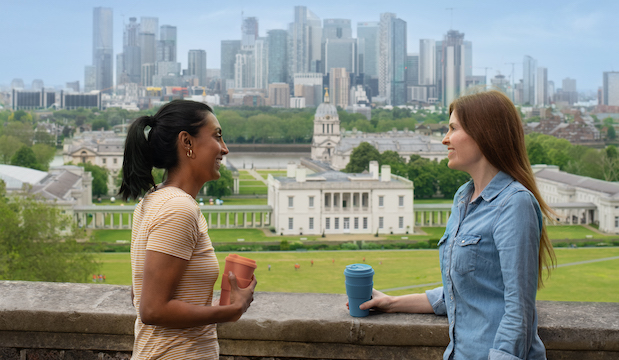
Photo: Royal Museums Greenwich
In 1884, the Royal Observatory, Greenwich became the source of the historic Prime Meridian of the world, marking the divide between the eastern and western hemispheres. Since then, the Prime Meridian has served as the reference line for longitude 0° and Greenwich Mean Time, or GMT
The astronomical work carried out at the Observatory was eventually moved to the village of Herstmonceux in East Sussex, where visibility conditions were better. Nationally recognised as a Scheduled Monument, the Royal Observatory, Greenwich is part of the wider Royal Museums Greenwich group, which also includes the National Maritime Museum, Cutty Sark and the Queen’s House. It hosts exhibitions, lectures and educational programmes, as well as family activities and planetarium shows – taking visitors to space and back within the hour.
Fancy travelling through time and space this summer? Here are some of the highlights to catch on a trip to the Royal Observatory, Greenwich…
Stand on the Meridian Line
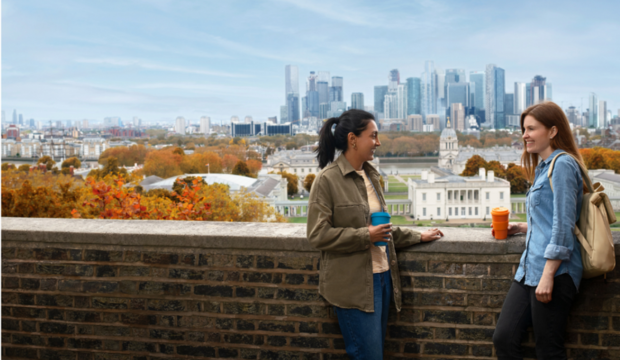
Royal Observatory, Greenwich. Photo: Royal Museums Greenwich
Nestled in this historic corner of London, the Royal Observatory is located on a hill overlooking the beautiful and sprawling Greenwich Park. As you enter the golden park gates, take in the sights as you wander up a tree-lined path leading to the Observatory. The site boasts impressive views across London, and you can also stand on the Prime Meridian as defined by the telescope in the building behind you.
‘Prime Mer-what?,’ you may be asking. Well, a meridian is a north-south line that’s used as the reference line for astronomical observations. Any north-south line can be referred to as a meridian, however the 'prime' meridian, defined as Longitude 0°, that’s used all over the world? That’s right here, outside the Royal Observatory, Greenwich.
See the Harrison Clocks
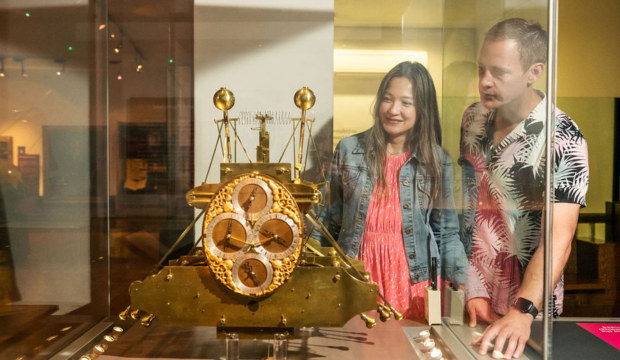
Photo: Royal Museums Greenwich
How were sailors able to calculate their position at sea? With the help of an accurate clock known as a ‘chronometer’, which could keep ‘Greenwich Time’ throughout a voyage, allowing mariners to determine their longitude. The idea stemmed from a series of clocks that were created by John Harrison in the 18th century. His beautiful moving brass timekeepers that range from the earliest version H1, through to his most successful pocket watch, H4, are on show in the Time and Longitude Gallery
Peer out from The Octagon Room
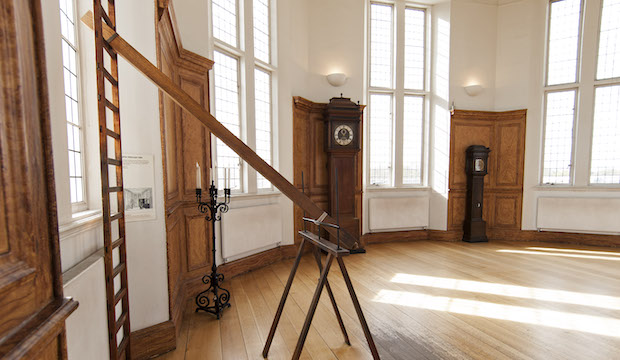
Photo: Royal Museums Greenwich
A visit to The Octagon Room, the oldest part of the Royal Observatory Greenwich, is a must. Commissioned by King Charles II and designed by Sir Christopher Wren, the eight-sided room, which has stood here since 1676, was where astronomers headed for an uninterrupted view of the night sky. Its high ceilings and floor-to-ceiling windows were perfect for a spot of stargazing, while the room is quite the picture at any time of day.
Stargaze watching a planetarium show
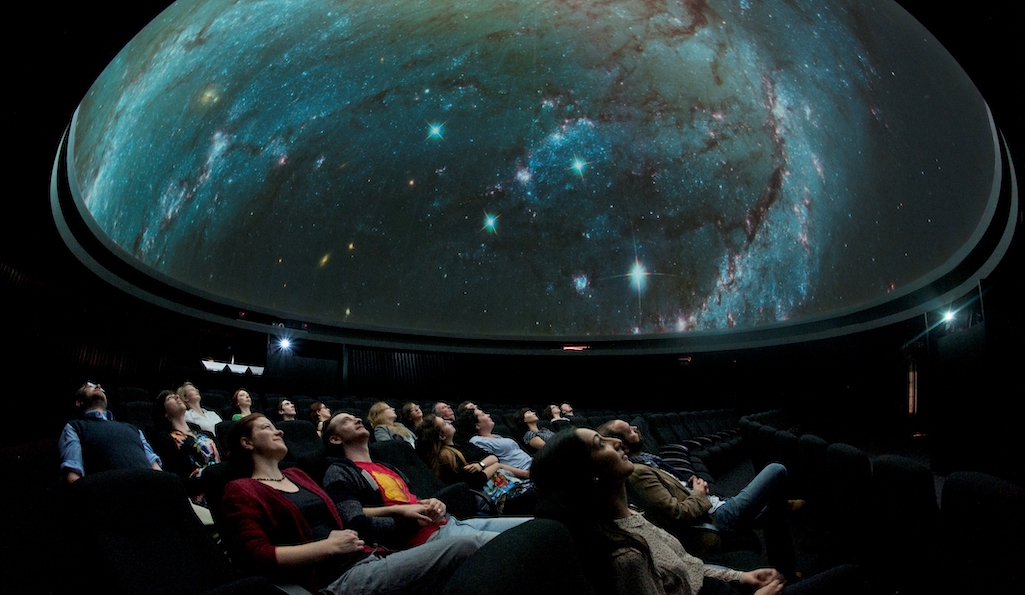
Photo: Royal Museums Greenwich
Remember the scene in Friends, where Ross and Rachel break into the planetarium and watch their own private show of the stars? Well, we’re not encouraging any breaking or entering here, but there are a whole host of shows available in the Peter Harrison Planetarium.
Beginners should start with the Observatory’s pièce de résistance: The Sky Tonight, a classic guide to the night sky for newbies, which is presented live by a Royal Observatory Greenwich astronomer and is recommended for ages seven and up.
Already know your way around the major constellations? There are further shows too, offering audiences a front-row seat for moon landings, high-speed tours of the universe and the chance to watch the birth, life and death of a star. For serious cinephiles, the Silver Screen Sci-Fi series is a must: audiences watch a science fiction film then listen to a talk, delivered by one of the venue’s resident astronomers, separating science fact from fiction.
So make haste, hurry and don’t let time slip by this autumn: meet it head on at Royal Observatory, Greenwich.
The Royal Observatory is open daily from 10am–5pm (last entry 4:15pm)
Win tickets
We have teamed up with Royal Museums Greenwich to give away tickets for entry to the Royal Observatory and a show at London's only planetarium. One lucky winner will receive a pair of entry tickets to Royal Observatory Greenwich as well as a pair of tickets to The Sky Tonight, a Planetarium show at Royal Observatory, Greenwich.
Click here to enter
Created in partnership with Royal Museums Greenwich
Take the Royal Observatory, Greenwich, for instance. Founded in 1675 by King Charles II, the hilltop site was originally set up for the purpose of preventing shipwrecks. It was the architect Christopher Wren, the name behind many of Greenwich’s local landmarks as well as St Paul's Cathedral, who suggested building the Observatory on this site. At that time, sailors could easily find their latitude (aka, their north-south position) by observing the sun or stars, but their longitude (east-west position) was trickier to determine. So the Observatory was built on the site of the ruined Greenwich Castle to determine longitude by producing accurate star maps.

Photo: Royal Museums Greenwich
In 1884, the Royal Observatory, Greenwich became the source of the historic Prime Meridian of the world, marking the divide between the eastern and western hemispheres. Since then, the Prime Meridian has served as the reference line for longitude 0° and Greenwich Mean Time, or GMT
The astronomical work carried out at the Observatory was eventually moved to the village of Herstmonceux in East Sussex, where visibility conditions were better. Nationally recognised as a Scheduled Monument, the Royal Observatory, Greenwich is part of the wider Royal Museums Greenwich group, which also includes the National Maritime Museum, Cutty Sark and the Queen’s House. It hosts exhibitions, lectures and educational programmes, as well as family activities and planetarium shows – taking visitors to space and back within the hour.
Fancy travelling through time and space this summer? Here are some of the highlights to catch on a trip to the Royal Observatory, Greenwich…
Stand on the Meridian Line

Royal Observatory, Greenwich. Photo: Royal Museums Greenwich
Nestled in this historic corner of London, the Royal Observatory is located on a hill overlooking the beautiful and sprawling Greenwich Park. As you enter the golden park gates, take in the sights as you wander up a tree-lined path leading to the Observatory. The site boasts impressive views across London, and you can also stand on the Prime Meridian as defined by the telescope in the building behind you.
‘Prime Mer-what?,’ you may be asking. Well, a meridian is a north-south line that’s used as the reference line for astronomical observations. Any north-south line can be referred to as a meridian, however the 'prime' meridian, defined as Longitude 0°, that’s used all over the world? That’s right here, outside the Royal Observatory, Greenwich.
See the Harrison Clocks

Photo: Royal Museums Greenwich
How were sailors able to calculate their position at sea? With the help of an accurate clock known as a ‘chronometer’, which could keep ‘Greenwich Time’ throughout a voyage, allowing mariners to determine their longitude. The idea stemmed from a series of clocks that were created by John Harrison in the 18th century. His beautiful moving brass timekeepers that range from the earliest version H1, through to his most successful pocket watch, H4, are on show in the Time and Longitude Gallery
Peer out from The Octagon Room

Photo: Royal Museums Greenwich
A visit to The Octagon Room, the oldest part of the Royal Observatory Greenwich, is a must. Commissioned by King Charles II and designed by Sir Christopher Wren, the eight-sided room, which has stood here since 1676, was where astronomers headed for an uninterrupted view of the night sky. Its high ceilings and floor-to-ceiling windows were perfect for a spot of stargazing, while the room is quite the picture at any time of day.
Stargaze watching a planetarium show

Photo: Royal Museums Greenwich
Remember the scene in Friends, where Ross and Rachel break into the planetarium and watch their own private show of the stars? Well, we’re not encouraging any breaking or entering here, but there are a whole host of shows available in the Peter Harrison Planetarium.
Beginners should start with the Observatory’s pièce de résistance: The Sky Tonight, a classic guide to the night sky for newbies, which is presented live by a Royal Observatory Greenwich astronomer and is recommended for ages seven and up.
Already know your way around the major constellations? There are further shows too, offering audiences a front-row seat for moon landings, high-speed tours of the universe and the chance to watch the birth, life and death of a star. For serious cinephiles, the Silver Screen Sci-Fi series is a must: audiences watch a science fiction film then listen to a talk, delivered by one of the venue’s resident astronomers, separating science fact from fiction.
So make haste, hurry and don’t let time slip by this autumn: meet it head on at Royal Observatory, Greenwich.
The Royal Observatory is open daily from 10am–5pm (last entry 4:15pm)
Win tickets
We have teamed up with Royal Museums Greenwich to give away tickets for entry to the Royal Observatory and a show at London's only planetarium. One lucky winner will receive a pair of entry tickets to Royal Observatory Greenwich as well as a pair of tickets to The Sky Tonight, a Planetarium show at Royal Observatory, Greenwich.
Click here to enter
Created in partnership with Royal Museums Greenwich
TRY CULTURE WHISPER
Receive free tickets & insider tips to unlock the best of London — direct to your inbox